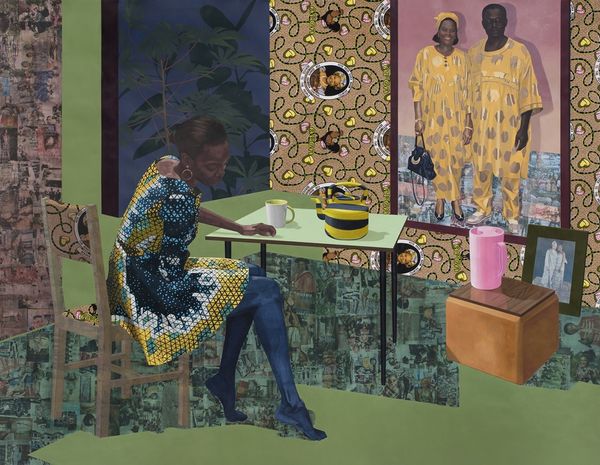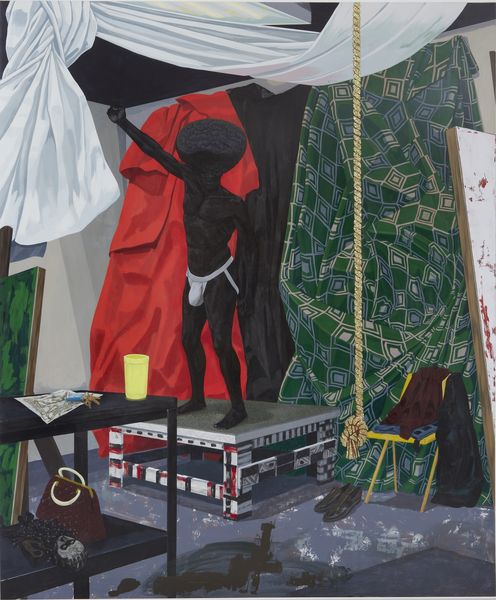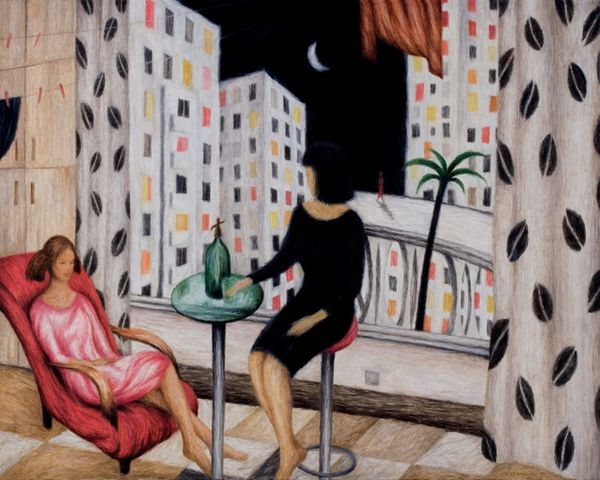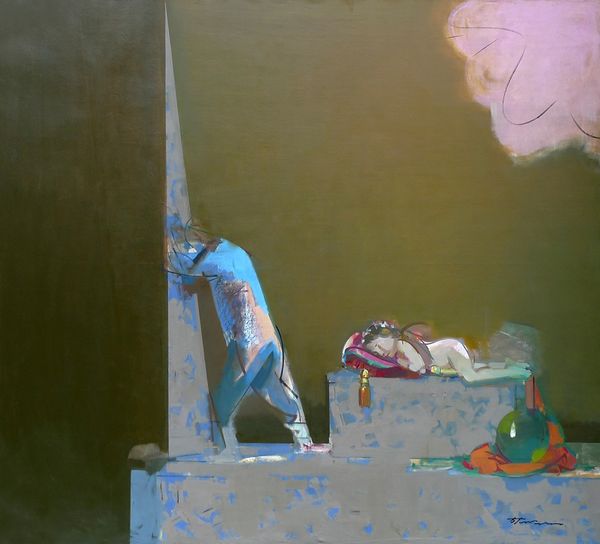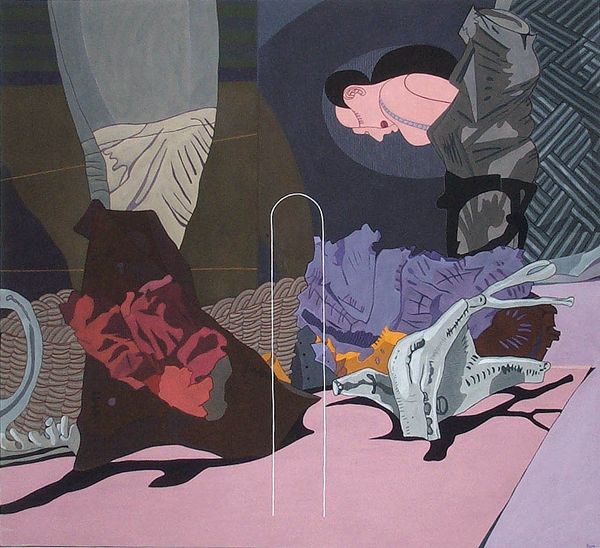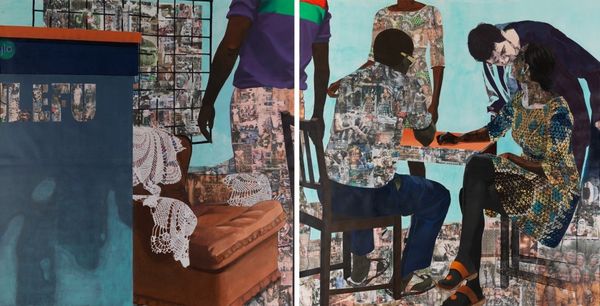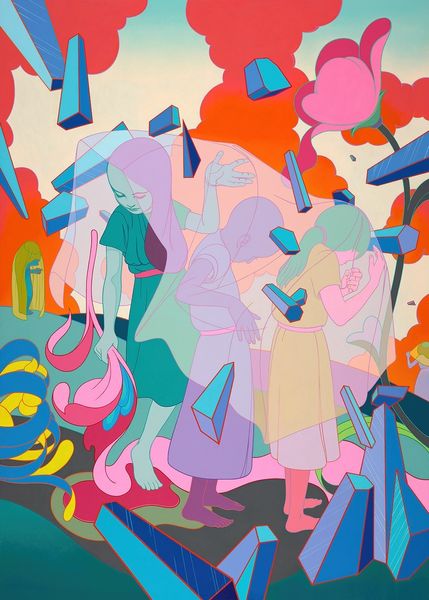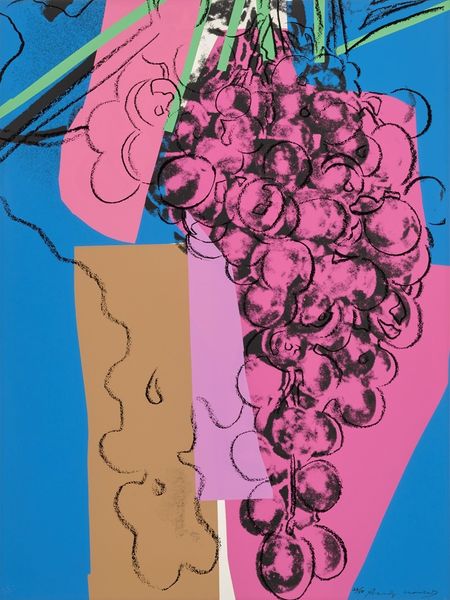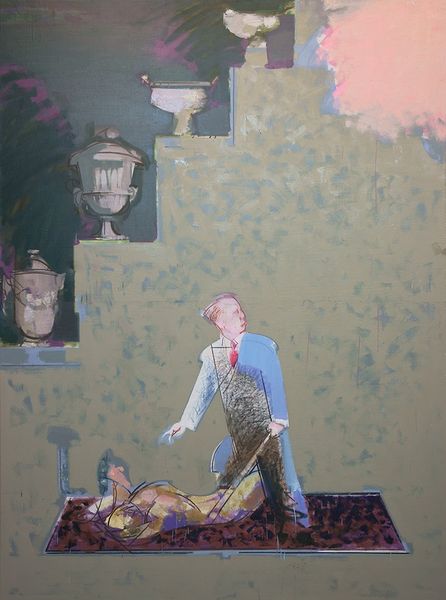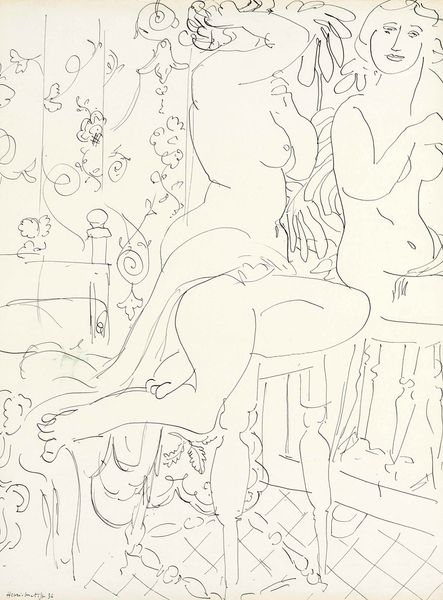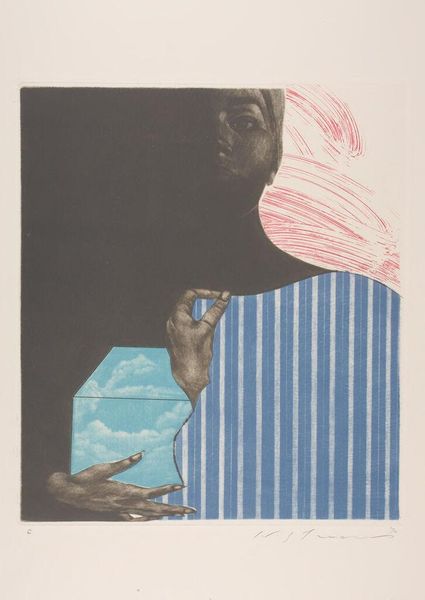
Untitled Mirror Girl 2014
0:00
0:00
kerryjamesmarshall
Museum of Contemporary Art (MCA), Chicago, IL, US
painting, acrylic-paint
#
portrait
#
contemporary
#
painting
#
acrylic-paint
#
figuration
#
modernism
Dimensions: 212.7 x 151.8 cm
Copyright: Kerry James Marshall,Fair Use
Curator: Well, here we are in front of Kerry James Marshall's "Untitled Mirror Girl" from 2014. It's a large-scale painting, primarily rendered in acrylic. What strikes you first about this piece? Editor: Honestly, the figure's unwavering gaze and sheer darkness. There's a disquieting intensity in that flattened perspective. It makes me question the assumed narratives of the female body and representations of Black womanhood. Curator: Absolutely. The almost complete blackness of her skin is a recurring and deliberate choice in Marshall's work. He directly engages with the historical absence of Black figures in the Western art canon. The darkness becomes a powerful symbol, a re-claiming of space. It pulls on minstrelsy, yet breaks the caricature, re-orienting ideas of the body's form in contemporary cultural and societal spaces. Editor: It feels confrontational, in a necessary way. The seemingly mundane domestic setting contrasts so starkly with the power of the figure. We have Christmas lights and geometric wallpaper. But what are we supposed to glean from these symbols? The discarded clothing? A lazy, somewhat unclean cat in the reflection? Curator: Those domestic details do build to a symbolic construction. In addition to her obvious blackness and presence, all the various other visual cues offer ways to access memory, perhaps cultural memory of certain home interiors, or the intimacy and preparation that takes place behind closed doors. Editor: Yes, this work pushes back against idealized images of Black women—and even disrupts contemporary standards for all female bodies by showing how performative ideas of the “perfect body” really are in their most stripped-down forms. We're not granted some sort of vulnerability to gawk at, but challenged with agency instead. She meets the gaze; we're left to wonder about the standards imposed onto all women and bodies across different media and temporal periods. Curator: Indeed. Marshall's strategic use of darkness, the domestic space, and her position challenge a Western history of marginalization and hyper-visibility and forces us to contend with these very complex themes and historical gaps. It’s about making the invisible visible in a way that shifts the viewer’s understanding of how the artwork might speak back to them. Editor: This makes Marshall's painting such a forceful reminder that visibility is not enough, but also that who controls representation ultimately determines identity itself. The painting asks me if the things around this image are real or fantasy and for what intentions. Curator: Right, "Untitled Mirror Girl" compels us to confront ingrained expectations, allowing for more inclusive, empathetic ways of seeing and remembering. Editor: The implications from those small adjustments within such symbolic painting force my imagination to grapple with so many questions of womanhood, representation, and seeing, which ultimately challenges the space of painting.
Comments
No comments
Be the first to comment and join the conversation on the ultimate creative platform.
